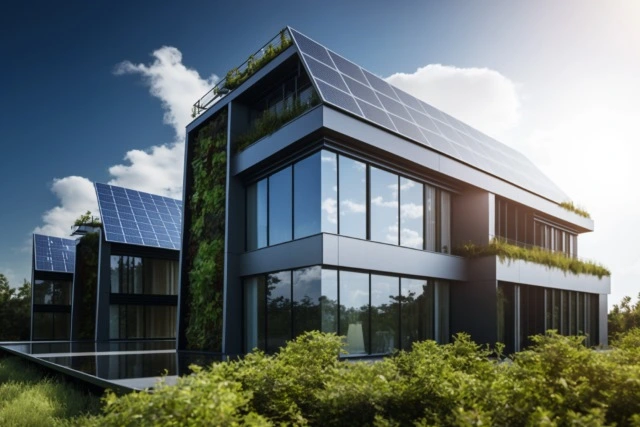From eco-friendly homes to zero-carbon office buildings, the drive toward sustainability in the construction industry has never been stronger. One of the most exciting developments in this field is the rise of autonomous buildings — structures that can generate their own power, monitor their own systems, and operate independently of the grid. These cutting-edge buildings symbolize our growing commitment to reducing our carbon footprint and creating a more sustainable future for ourselves and future generations.
Autonomous buildings definition
Autonomous buildings refer to structures designed for operational independence from external power grids and water systems. They generate their own energy from renewable sources, store it in batteries, and use automation technology to manage their systems. This leads to energy independence and reduced reliance on traditional energy sources.
What is an example of a self-sufficient building?
Currently, a few autonomous buildings already exist, with examples such as the Edge building in Amsterdam and the Bullitt Center in Seattle. Both buildings generate their energy from solar panels and automate energy usage. The Edge building also regulates lighting, heating, and cooling based on occupancy and weather conditions, while the Bullitt Center manages water usage through rainwater harvesting and greywater recycling.
Predictive systems that use real-time and historical data
One of the key features of autonomous buildings is their use of predictive systems that rely on real-time and historical data to optimize energy usage and building performance. These systems use sensors placed throughout the building to gather data on temperature, humidity, occupancy, and other factors. The predictive system then uses that data to make real-time adjustments to lighting, heating, and cooling, helping to reduce energy consumption and improve overall efficiency.
In addition to real-time data, these systems also use historical data to identify patterns and predict future energy usage. This allows building managers to make more informed decisions about energy usage and maintenance, ultimately reducing costs and improving the building’s overall performance. Digital twin technology can also use these data points to provide further insight into strategies for optimizing building performance.
Technology for autonomous buildings
At the forefront of sustainable design, autonomous buildings use advanced technologies to optimize energy usage and reduce environmental impact. These technologies also see use in smart buildings.
Building maintenance
Building maintenance is crucial for autonomous building design. Predictive maintenance systems monitor real-time data to detect potential issues before they become costly problems. By addressing maintenance needs proactively, building systems operate more efficiently, saving costs and reducing environmental impact. Building maintenance systems can integrate with automation systems to allow for easy monitoring and adjustments so building managers can further enhance efficiencies.
Autonomy for all building applications
From lighting and HVAC to security and occupancy monitoring, autonomous buildings use autonomy in all building systems. Incorporating autonomy into all systems improves building efficiency and reduces waste for a more sustainable building. For example, autonomous HVAC systems adjust temperature and airflow based on occupancy and environmental factors. Autonomous security systems streamline access control policies through connected IoT devices.
How are these buildings sustainable?
Autonomous buildings are designed to be sustainable. They incorporate renewable energy sources like solar and wind power, advanced building materials, and autonomous systems that optimize building operations. These technologies and strategies reduce the environmental impact of buildings, improve their performance, and enhance their sustainability. This makes it relatively easy for autonomous buildings to meet the criteria for ESG Green Buildings.

Dr. Erik Wallin
Chief Ecosystem Officer, and founder of ProptechOS and RealEstateCore is recognized as a leader in Building Operating Systems (BOS) and making the buildings of the world smarter. He holds an MSc and a Ph.D. in Media and Computer Science from KTH Royal Institute of Technology.
Read his full bio and information here.

